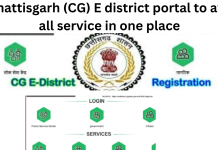Introduction
In a significant development, the National Company Law Tribunal (NCLT) Mumbai has given its nod for the sale of real estate assets belonging to telecom giant Reliance Communications. This move comes as a pivotal step in the insolvency resolution process, with the resolution professional seeking approval for the sale of specific unencumbered assets.
NCLT Mumbai’s Decision
The NCLT order, dated December 7, provides clarity on the resolution professional’s authority to sell assets after the submission of the resolution plan for approval. This marks a crucial phase in the corporate insolvency resolution process, underscoring the importance of obtaining tribunal approval before proceeding with asset sales.
Regulation 29 of the CIRP Regulations
At the heart of this decision lies Regulation 29 of the Corporate Insolvency Resolution Process (CIRP) Regulations. Understanding the implications of this regulation is vital in comprehending the dynamics of selling assets under insolvency proceedings. It delineates the procedural framework that governs such transactions.
Approval Process
The approval process involves a meticulous evaluation by the tribunal, ensuring that the sale aligns with the broader objectives of the resolution plan. The resolution professional plays a pivotal role in presenting a compelling case for the sale, emphasizing the necessity of such actions for the overall success of the resolution process.
Utilization of Sale Proceeds
The NCLT’s order specifies that the sale proceeds shall be treated as unencumbered assets of the corporate debtor. This adds a layer of transparency and accountability, as the distribution of these proceeds is earmarked for implementation of the approved resolution plan or, if necessary, for liquidation.
Assets for Sale
Among the assets identified for sale are the Chennai Haddow Office, a substantial land parcel in Ambattur, Pune land parcel, an office space in Bhubaneswar, and investments in shares of Campion Properties and Reliance Realty. Each asset represents a piece in the puzzle of Reliance Communications’ financial restructuring.
Challenges and Opportunities
While the sale opens avenues for financial recuperation, challenges may arise in navigating real estate transactions. However, astute investors can view this as an opportunity to acquire valuable assets at potentially favorable terms, contributing to the industry’s resilience.
Impact on Reliance Communications
The asset sale is poised to have a profound impact on Reliance Communications, influencing its financial health and restructuring efforts. The infusion of funds from the sale could bolster the company’s capacity to meet its obligations and chart a new course.
Market Dynamics
Understanding the broader market dynamics is crucial. The telecom industry undergoes significant transformations, and Reliance Communications’ asset sale mirrors its adaptation to evolving challenges and opportunities.
Latest Blogs
Legal Implications
Delving into the legal aspects of the asset sale reveals complexities tied to insolvency proceedings. Creditors and stakeholders should closely monitor these developments, as the legal landscape can shape the outcomes of such transactions.
Stakeholder Perspectives
Gaining insights from various stakeholders is paramount. Creditors, investors, and industry experts each bring a unique perspective to the table. Understanding their viewpoints is essential in gauging the broader implications of the asset sale.
Future Prospects for RCom
Speculating on the future trajectory of Reliance Communications’ post-asset sale involves considering multiple scenarios. The company’s future strength or transformation is yet to unfold, a topic of keen interest for industry observers.
Industry Comparison
Comparing the Reliance industry bankruptcy’s asset sale with similar cases in the telecom industry provides valuable context. Insights and trends aid a nuanced grasp of challenges and opportunities in this dynamic sector.
Risks and Mitigations
Identifying potential risks associated with the asset sale, such as market volatility or legal disputes, is essential. Proposing effective mitigations ensures a more seamless execution of the resolution plan.
Conclusion
In summary, the NCLT’s approval for Reliance Communications’ real estate asset sale is a pivotal point in its insolvency resolution. As the telecom giant undergoes this transformation, industry and stakeholders closely watch its impact on financial markets and the broader telecom landscape.
Frequently Asked Questions (FAQ’s)
Ans: The sale is part of the insolvency resolution process, with the resolution professional seeking approval for financial restructuring.
Ans: Regulation 29 outlines the procedural framework for selling assets under insolvency proceedings, requiring tribunal approval.


























